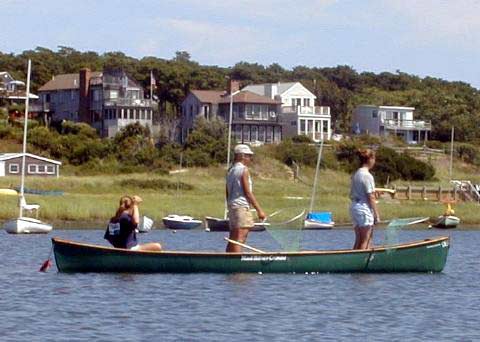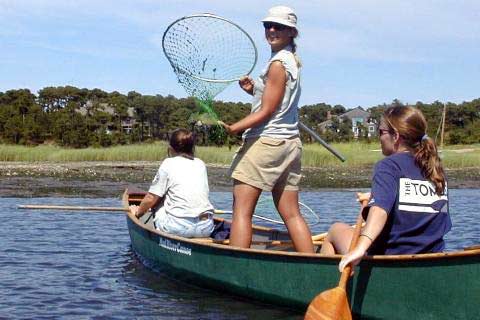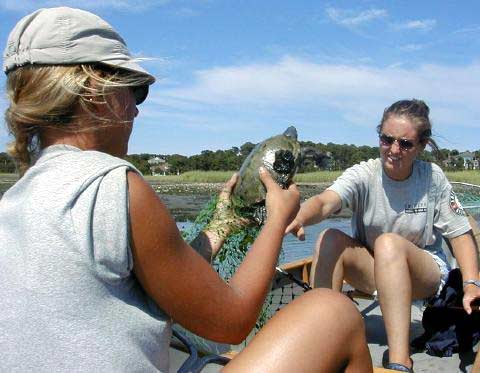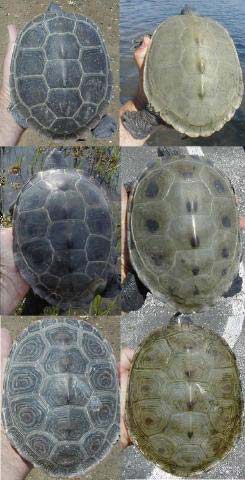Stalking Terrapins by Canoe — 31 July 2001Researcher Maureen and AmeriCorps participants, Katie and Emily, launched their canoe from the town pier to observe turtles in Chipman’s Cove and Duck Creek. The game? Paddle slowly along the edge and through the channels, scanning the surface for snorkeling heads and peering into the murky depths for turtles lurking on the bottom. The first two terrapins were discovered on the eastern side of Chipman’s Cove, hunkering in the marsh grass in the protected lee of a northeast wind. Number 1206 is a five-year-old male with a story to tell; he’s missing one digit of his left rear limb, three nails on his right rear, and the end of his tail. Turtle #1207 is a mature female measuring nearly 19 centimeters carapace length and weighing just over a kilogram. Both are first-time captures.
As the tide ebbed, so did their luck. They rowed for hours, spotting the occasional bobbing head, but nothing close enough to catch. Then, they switched to Duck Creek and spotted Terrapin #764 off the tip of the mud bank where she was last seen on 13 June (see Mud Wrestling), but of course no one knew who she was — just another turtle surfacing for a breath of air. Paddling with all stealth speed, Maureen and Katie maneuvered the canoe toward #764 while Emily posted lookout in the bow.
The turtle dove for the shallows, but not quick or deep enough to evade Katie’s steady glance and swift net.
Terrapin 764 proved another interesting recapture. Since 13 June, she has gained 62 grams from 1190 to 1252. And her plastron, which was mildly abraded last month, has fully erupted with some bleeding through nasty looking abrasions along the suture of the anal and femoral scutes, as well as the abdominal scutes.
| ||||||||||




